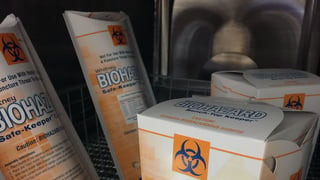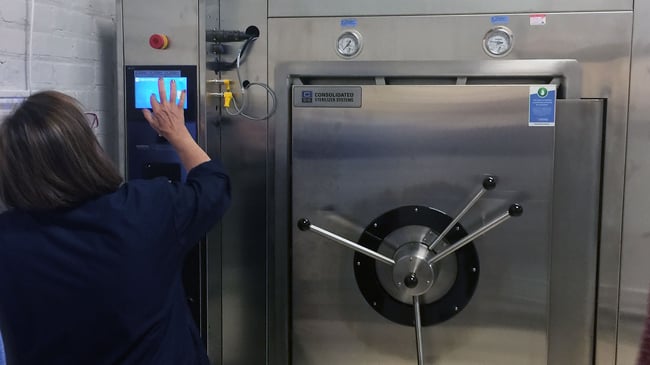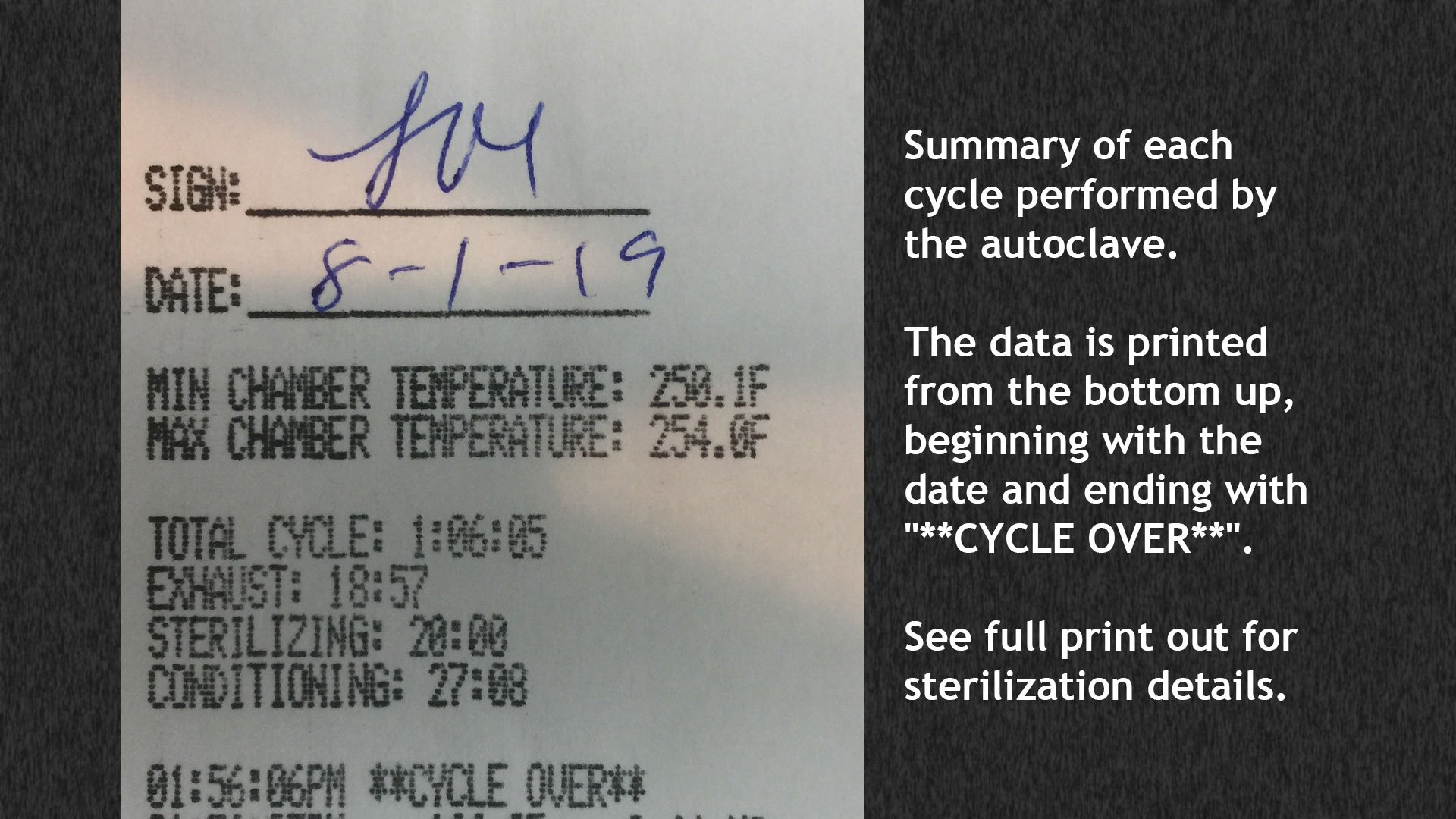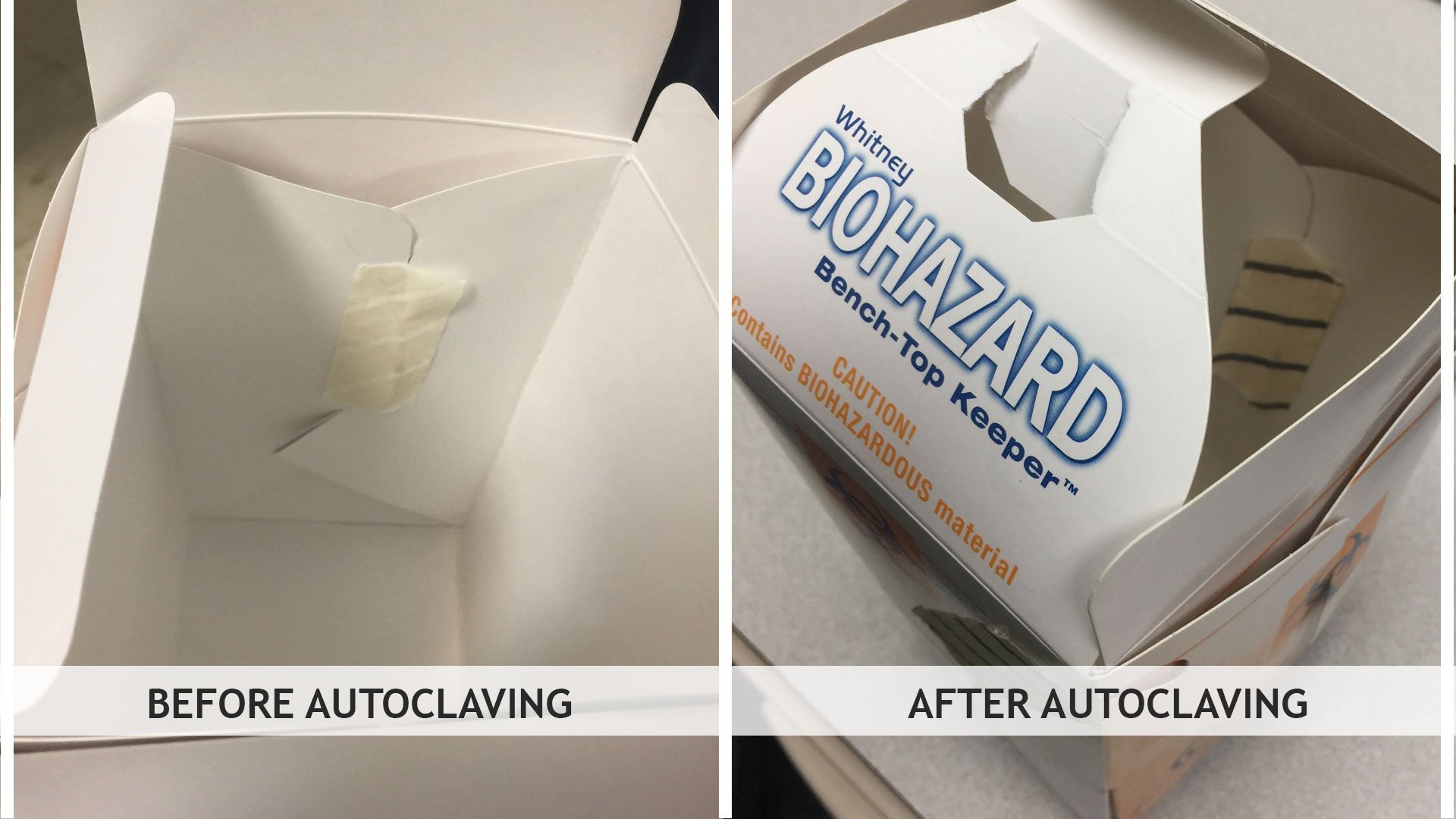
According to the Centers for Disease Control and Prevention (CDC) Disinfection Guidelines, “of all the methods available for sterilization, moist heat in the form of saturated steam under pressure is the most widely used and the most dependable… Like all sterilization processes, steam sterilization has some deleterious effects on some materials...”.
Since autoclaving is the most common form of sterilization, a good alternative to the environmentally damaging practice of waste incineration, and likely the method many of our customers are using, we tested the autoclavability of Whitney’s BIOHAZARD Bench-Top Keeper and BIOHAZARD Safe-Keeper.
Introduction:
According to the Centers for Disease Control and Prevention (CDC) Disinfection Guidelines, “of all the methods available for sterilization, moist heat in the form of saturated steam under pressure is the most widely used and the most dependable… Like all sterilization processes, steam sterilization has some deleterious effects on some materials...”
Since autoclaving is the most common form of sterilization, a good alternative to the environmentally damaging practice of waste incineration, and likely the method many of our customers are using, we tested the autoclavability of Whitney’s BIOHAZARD Bench-Top Keeper and BIOHAZARD Safe-Keeper.
Results:
Using steam sterilization, or autoclaving, for a total cycle time of 1:06:05 reaching maximum chamber temperatures of 254°F and maintaining a minimum chamber temperature of 250.1°F, both products maintained their structural integrity and strength without deleterious effects.
To confirm heat penetration during each cycle, a chemical indicator tape was placed inside each tested container, both showing a positive result – not proof that organisms have been killed, but indicates that a temperature of 121°C / 249.8°F had been achieved in the center of each container within the autoclave. Chemical tape is used to validate the time, temperature, and quality of steam exposure.
Discussion:
While the BIOHAZARD Safe-Keeper and the BIOHAZARD Bench-Top Keeper were designed to be autoclavable, and have tested as such, we recommend that you try it in with your recommended cycle as your protocols may vary to those used for this test based upon the regulated waste contained within the container.
Precautions in the collection and disposal of biohazardous waste are to protect patients, and healthcare, laboratory, and waste disposal employees – as well as the general public and the environment. This places additional responsibility upon those who manage the waste neutralization and disposal processes for laboratory, pathology, anatomy, blood specimens, and other body fluid waste.
Whitney’s line of disposable, autoclavable biohazard waste containers (not sharps) were designed in accordance with OSHA 29 CFR 1910.1030 for the collection and disposal of regulated waste:
Contact Whitney Medical Solutions at (800) 338-4237 if you have any further questions regarding the autoclavability of our line of disposable biohazardous waste containers, or any other Whitney Medical Solutions products or devices.
Additional Images:
 |
 |
 |
|
Additional Resources on Medical and Laboratory Waste Management:
- CDC / Regulated Medical Waste
- Guidelines for Safe Work Practices in Human and Animal Medical Diagnostic Laboratories: https://www.cdc.gov/mmwr/preview/mmwrhtml/su6101a1.htm
- EPA / Medical Waste: https://www.epa.gov/rcra/medical-waste
- USDOL / OSHA: Laboratories: https://www.osha.gov/SLTC/laboratories/index.html
- Laboratory Safety Guidance (OSHA 3404-11R 2011)
https://www.osha.gov/Publications/laboratory/OSHA3404laboratory-safety-guidance.pdf
About Whitney Medical Solutions:
Whitney Medical Solutions™ (WMS) is a designer and manufacturer of medical devices. Founded in 1984, WMS has served the medical community by developing innovative products for almost 30 years. Focused on the medical community and the needs and issues that prevent medical professionals from getting their jobs done efficiently and effectively, WMS finds Real Solutions For Real Problems in the lab and operating room (OR) environments. Contact Whitney Medical Solutions at (800) 338-4237 or visit their website at Whitney Medical Solutions.






